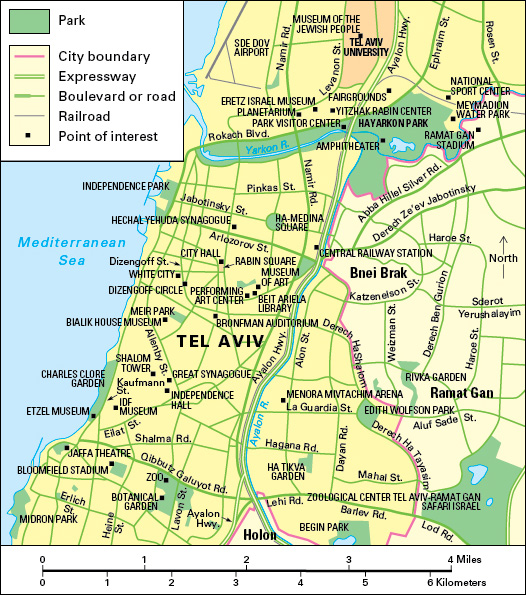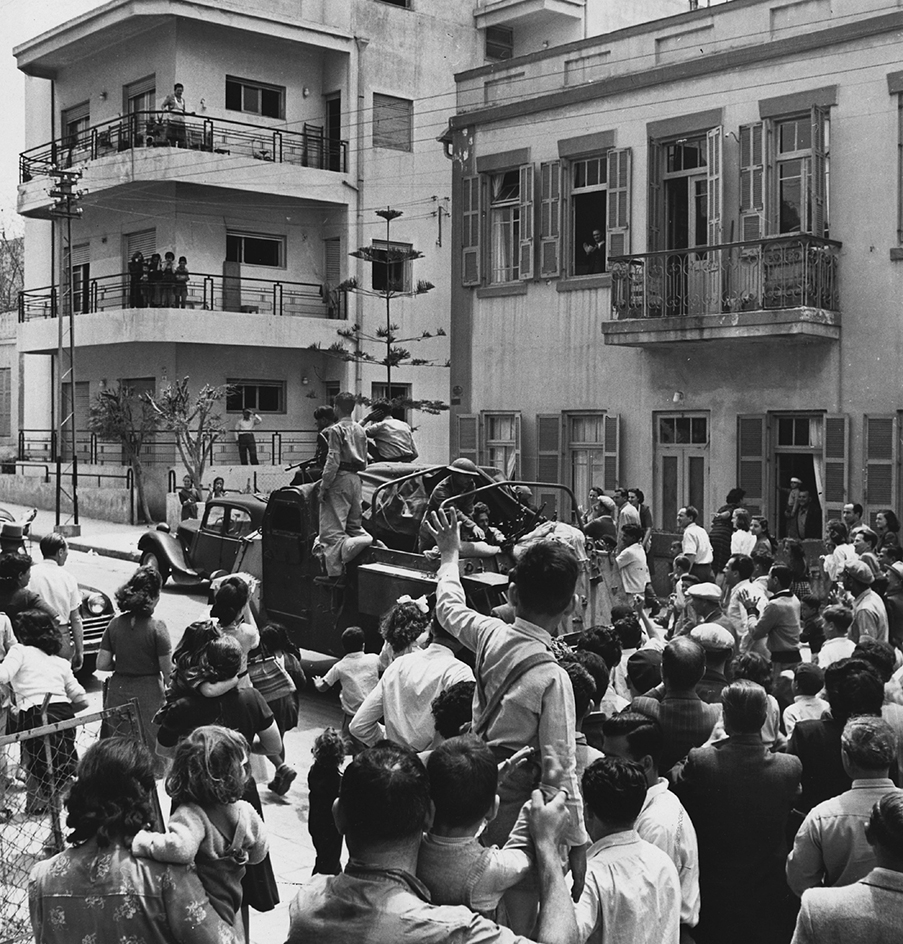Tel Aviv << TEHL uh VEEV >> (pop. 467,875) is Israel’s second largest city and chief commercial, financial, and industrial center. Only Jerusalem has more people. Tel Aviv is one of the most modern cities in the Middle East. It lies on the eastern shore of the Mediterranean Sea.

The heart of Tel Aviv is a major downtown intersection called Dizengoff Circle. Fashionable shops and sidewalk cafes line the nearby streets. The 37-story Shalom Tower stands in the city’s financial district, several blocks south of Dizengoff Circle. The southwestern section of the city was formerly a separate town called Jaffa (Yafo in Hebrew). Jaffa, an ancient port area that dates back to Biblical times, has many historic sites that have been restored by archaeologists. Jaffa also has many art galleries, cafes, restaurants, and nightclubs. Most of the people of Tel Aviv live in apartment buildings.
Cultural attractions in Tel Aviv include the Eretz Israel Museum and the Tel Aviv Museum of Art. Tel Aviv University is one of the city’s several institutions of higher learning. Bar-Ilan University is in Ramat Gan, a suburb of the city.
Tel Aviv is the center of Israel’s chief manufacturing district. About half the nation’s business companies are in the area. Their products include building materials, chemicals, clothing, electronic equipment, machine tools, and processed foods. The city is also the nation’s leading center for banking, publishing, and trade.
In 1909, Jewish immigrants from Europe founded Tel Aviv northeast of Jaffa. Tel Aviv was administered as part of Jaffa at first, but it became a separate town in 1921. Tel Aviv grew rapidly as Jewish immigrants poured in, mainly from Europe. It became Israel’s first capital when the nation was established in 1948. The capital was moved to Jerusalem in 1949, but the Israeli Ministry of Defense and most foreign embassies remained in Tel Aviv. Most government departments maintain offices in Tel Aviv. In 1950, Tel Aviv and Jaffa merged to form the city of Tel Aviv-Yafo. Tel Aviv-Yafo remains the official name, but the city is almost always called Tel Aviv.

Tel Aviv continued to grow rapidly in the 1950’s and early 1960’s. Its population reached about 392,100 in 1965 and then began to decline, but the suburban population continued to rise. The rapid growth of the Tel Aviv area resulted in such problems as air pollution, slums, and traffic jams. During the Persian Gulf War of 1991, Iraq fired about 25 missiles toward Tel Aviv. Several missiles and falling debris struck residential areas in or around Tel Aviv. Two people were killed, and about 7,500 apartments were damaged.
See also Jaffa.
